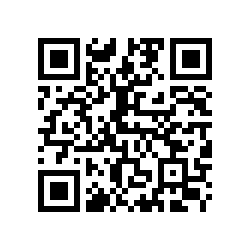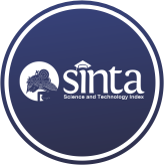Faktor Yang Mempengaruhi Keputusan Partisipasi Pemilu Dengan Metode TOPSIS
(1) Universitas Bina Sarana Informatika, Indonesia
(*) Corresponding Author
Abstract
Full Text:
PDFReferences
L. Syafirullah, A. S. Prabowo, and R. H. Maharrani, “… Candidates Milenial Generation Cilacap State Polytechnic: Metode Ahp Dalam Menentukan Bakal Calon Presiden Ri 2024 Generasi …,” J. Minfo Polgan, vol. 12, pp. 819–829, 2023, [Online]. Available: https://www.jurnal.polgan.ac.id/index.php/jmp/article/view/12498%0Ahttps://www.jurnal.polgan.ac.id/index.php/jmp/article/download/12498/1687
H. Siregar, F. Susanti, R. Liona, and A. Kurnia, “Analisis Perilaku Pemilih Pada Pemilihan Presiden Tahun 2019 Di Kabupaten Tanjung Jabung Timur,” Jisip-Unja, vol. 4, no. 1, pp. 8–15, 2020.
F. M. Pradita, “Peran Serta Mahasiswa Universitas Widya Dharma Klaten Dalam Meningkatkan Partisipasi Politik Pada Pemilihan Umum Presiden Tahun 2019,” 2019.
E. T. Alawiah and D. A. Putri, “Implementasi Metode TOPSIS Pada Penerima Bantuan Sosial Akibat Covid19 di Desa Kota Batu Ciomas Bogor,” J. Sains Komput. Inform., vol. 5, no. 1, pp. 72–82, 2021, [Online]. Available: https://tunasbangsa.ac.id/ejurnal/index.php/jsakti/article/view/299
R. W. Arida, “Implementasi Metode TOPSIS Dalam Pemilihan Jasa Pangkas Rambut Dimasa Pandemi Covid 19,” J. At-Tamwil Kaji. Ekon. Syariah, vol. 3, no. 1, pp. 68–85, 2021, doi: 10.33367/at.v2i3.1454.
D. A. Prabowo, M. Y. Fathoni, R. Toyib, and D. Sunardi, “Sosialisasi Aplikasi Merdeka Mengajar Dan Pengisian Konten Pembelajaran Pada Smkn 3 Seluma Untuk Mendukung Program Smk-Pk Tahun 2021,” JPMTT (Jurnal Pengabdi. Masy. Teknol. Terbarukan), vol. 1, no. 2, pp. 55–60, 2021, [Online]. Available: https://jurnal.ikhafi.or.id/index.php/jpmtt/article/view/410
Muhamad Ridzal Khasbullah, M. G. A. Sunarso, and Perani Rosyani3, “Pemilihan Siswa Terbaik Melalui Metode Pendukung,” Log. J. Ilmu Komput. dan Pendidik., vol. 1, no. 3, pp. 479–484, 2023.
P. Citra, I. W. Sriyasa, and H. B. Santoso, “Sistem Pendukung Keputusan Penentuan Kinerja Sales Terbaik Menggunakan Kombinasi Grey Relational Analysis dan Pembobotan Rank Sum,” vol. 2, pp. 99–108, 2024.
A. D. Wahyudi, “Penentuan Lokasi Gudang Baru Menggunakan TOPSIS dan Pembobotan PIPRECIA,” pp. 22–30, 2024.
F. S. Amalia, “Pemilihan Hotel Terbaik Berdasarkan Review Pengguna Menggunakan Metode Operational Competitiveness Rating Analysis ( OCRA ),” pp. 19–27, 2024.
A. Fahmi, A. Khan, Thabet Abdeljawad, and M. A. Alqudah, “Natural gas based on combined fuzzy TOPSIS technique and entropy,” Heliyon, vol. 10, no. 1, p. e23391, 2024, doi: 10.1016/j.heliyon.2023.e23391.
S. Riahi, N. Fathianpour, and S. Hassan Tabatabaei, “Improving the accuracy of detecting and ranking favorable porphyry copper prospects in the east of Sarcheshmeh copper mine region using a two-step sequential Fuzzy - Fuzzy TOPSIS integration approach,” J. Asian Earth Sci. X, vol. 10, no. April, p. 100166, 2023, doi: 10.1016/j.jaesx.2023.100166.
DOI: https://doi.org/10.30645/kesatria.v5i2.387
DOI (PDF): https://doi.org/10.30645/kesatria.v5i2.387.g383
Refbacks
- There are currently no refbacks.
Published Papers Indexed/Abstracted By:














